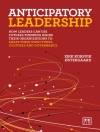Recently nominated one of five finalists selected for the 2005 Berry-AMA Book Prize for best book in marketing!
‘Tellis has done a remarkable job. He has brought together an amazingly diverse literature. Unlike some other sources that claim to be able to measure the effects of advertising, Tellis′s thoroughness and ability to understand and convey results of various experiments and statistical analyses helps the reader to separate the wheat from the chaff. Any student of advertising, whether new to the field or a seasoned veteran executive or researcher, should read this book.’
–Alan G. Sawyer, University of Florida
Effective Advertising: How, When, and Why Advertising Works reviews and summarizes an extensive body of research on advertising effectiveness. In particular, it summarizes what we know today on when, how, and why advertising works. The primary focus of the book is on the instantaneous and carryover effects of advertising on consumer choice, sales, and market share. In addition, the book reviews research on the rich variety of ad appeals, and suggests which appeals work, and when, how, and why they work.
The first comprehensive book on advertising effectiveness, Understanding Effective Advertising reviews over 50 years of research in the fields of advertising, marketing, consumer behavior, and psychology. It covers all aspects of advertising and its effect on sales, including sales elasticity, carryover effects, content effects, and effects of frequency. Author Gerard J. Tellis distills three decades of academic and professional experience into one volume that successfully dismisses many popular myths about advertising, such as:
* Advertising has a powerful influence on consumers and often generates consumer need
* The effects of advertising persist for decades
* If an ad fails initially, repetition will ensure its ultimate success
* Ads need only one to three exposures to succeed
* Advertising by argument is the most effective method
* The best ads are unique and original
* Advertising is very profitable
Tellis then provides alternatives and establishes the following truths about advertising:
* Advertising is vitally important for free markets, but its action is subtle and its discovery is fragile
* The effects of advertising are short-lived
* If ads are not initially effective, repetition will not make them more effective
* Scientific principles can show which ads work, though firms often ignore advertising research and persist with ineffective ads
* Advertising by emotion may have the most effective appeal
* Templates can yield very effective ads
* Advertising is often unprofitable
Effective Advertising will be an important addition to courses at the graduate or undergraduate level in advertising, marketing, communication, and journalism. It will also be an invaluable reference for professionals and researchers working in these fields.
Table of Content
1. EVALUATING ADVERTISI NG
IMPORTANCE OF ADVERTISING IN MODERN ECONOMICS
2. SWEET, SECRET WORKINGS OF ADVERTISING
MYTHS ABOUT ADVERTISING EFFECTIVENESS
TRUTH ABOUT ADVERTISING
3. A GENERAL THEORY OF FIRMS′ ADVERTISING
WHY FIRMS ADVERTISE: THEORY OF ADVERTISING DEMAND
WHY BIG SUCCESSES ARE RARE: THEORY OF ADVERTISING EFFECTIVENESS
WHY FIRMS PERSIST WITH INEFFECTIVE ADVERTISING: THEORY OF ADVERTISING SUPPLY
4. MEASURES OF ADVERTISING′S EFFECTIVENESS
DEFINITION AND CLASSIFICATION OF ADVERTISING VARIABLES
MODELS OF THE HIERARCHY OF EFFECTS
5. RESEARCH DESIGNS TO ASSESS ADVERTISING EFFECTIVENESS
LABORATORY EXPERIMENT
FIELD APPROACH
HYBRID APPROACHES
6. MARKET EFFECTS OF ADVERTISING INTENSITY
CLASSIFICATION OF STUDIES
FINDINGS ABOUT ADVERTISING WEIGHT
FINDINGS ABOUT ADVERTISING ELASTICITY
FINDINGS ABOUT AD FREQUENCY
7. ADVERTISING′S DYNAMIC AND CONTENT EFFECTS
FINDINGS FROM MARKET STUDIES ABOUT ADVERTISING CARRYOVER
FINDINGS ABOUT ADVERTISING WEARIN AND WEAROUT
FINDINGS ABOUT AD CONTENT
8. ADVERTISING AS PERSUASION
ROUTES OF PERSUASION
LOW INVOLVEMENT OR PASSIVE PROCESSING
REPETITION IN PERSUASION
9. ARGUMENT IN ADVERTISING
HOW ARGUMENT PERSUADES
AGRUMENT STRATEGY
10. EMOTION IN ADVERTISING
HOW DO EMOTIONS WORK?
WHEN DO EMOTIONS WORK?
METHODS OF AROUSING EMOTIONS
ROLE OF SPECIFIC EMOTIONS
11. ENDORESEMENT IN ADVERTISING
TYPES OF ENDORSERS
WHY ENDORSEMENTS WORK
WHEN TO USE ENDORSERS
STRATEGIC IMPLICATIONS
COLLECTION OF SINGLE SOURCE DATA
About the author
Gerard J. Tellis (Ph D Michigan) is Neely Chaired Professor of American Enterprise, Director of the Institute for Outlier Research, and Director of the Center for Global Innovation, at the USC Marshall School of Business. Dr. Tellis is an expert in public policy, virality on social media, diffusion of innovations, advertising, and global market entry. He has published 7 books and over 200 papers (http://www.gtellis.net ) that have won over 27, 000 citations in Google Scholar. His publications have won over 25 awards, including the AMA-IRWIN-Mc Graw Hill Distinguished Educator, Long Term Impact Marketing Science, Frank M. Bass, William F. O′Dell (twice), and Harold D. Maynard (twice) awards. Dr. Tellis is a Distinguished Professor of Marketing Research, Erasmus University, Rotterdam and a Fellow of Sidney Sussex College, Cambridge University, UK. He is President of ISMS and was an Associate Editor of Marketing Science and Journal of Marketing Research. Previously he was a Trustee of the Marketing Science Institute, the Treasurer and VP External Affairs of ISMS, and a Sales Development Manager of Ethnor/ Johnson & Johnson. In his spare time he is a fruit gardener and a rock collector.












